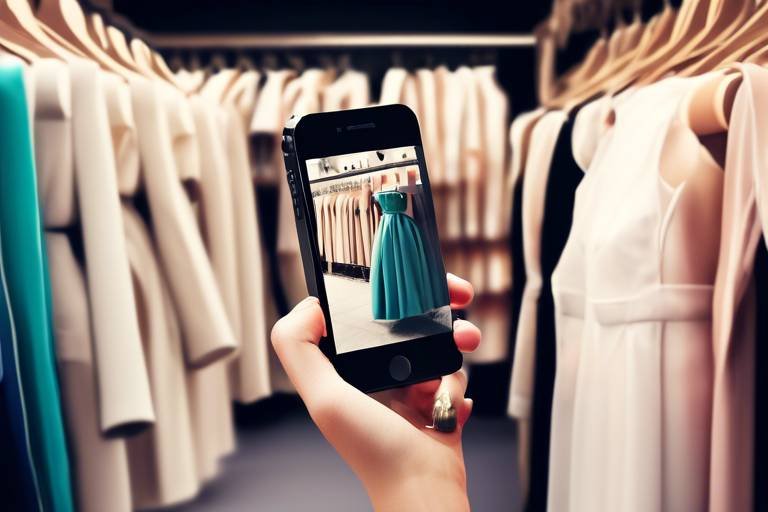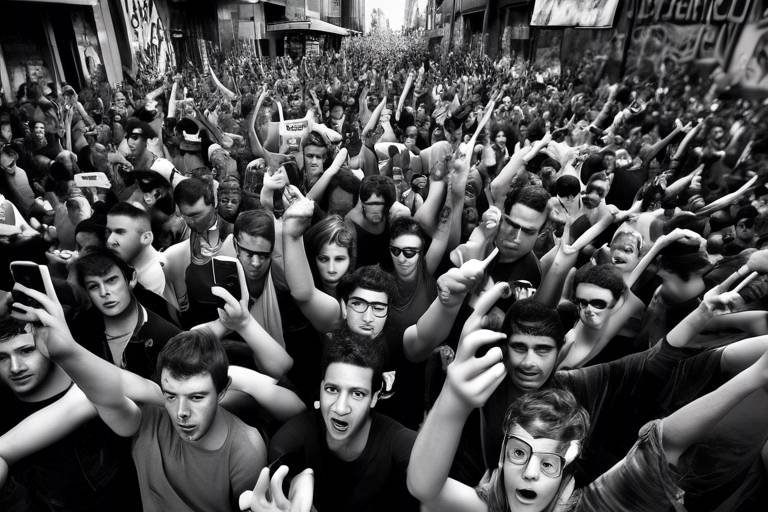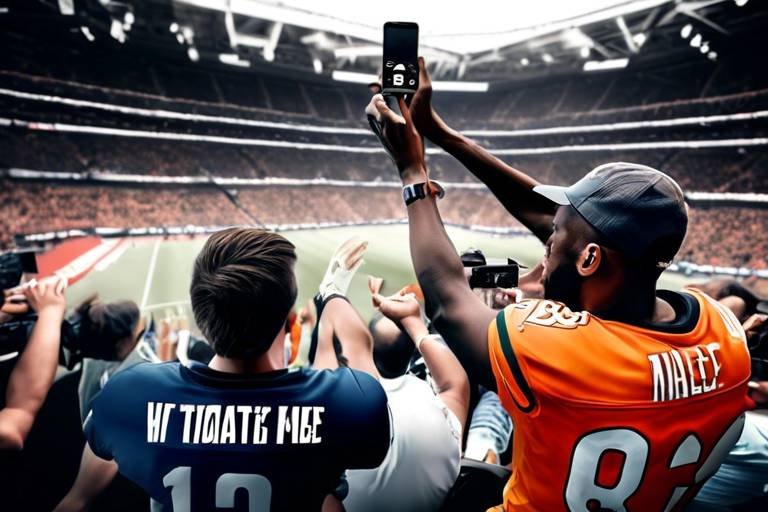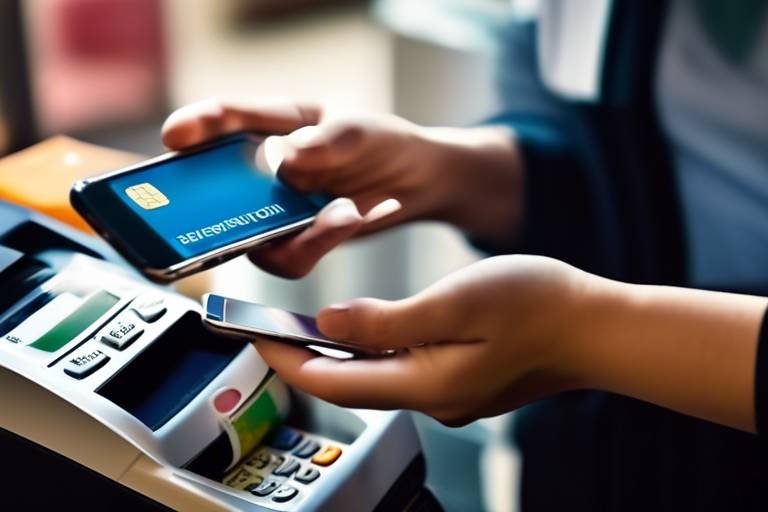How Technology is Influencing Fashion Retail
In today’s fast-paced world, technology is not just a luxury; it's a necessity that permeates every aspect of our lives, and the fashion retail industry is no exception. The way we shop, interact with brands, and make purchasing decisions has been dramatically transformed by technological advancements. Gone are the days when consumers solely relied on physical stores to get their fashion fix. Now, with just a few clicks, you can explore a universe of styles, trends, and brands right from the comfort of your home. This article dives deep into how technology is reshaping the fashion retail landscape, highlighting key trends, innovative practices, and the evolving consumer behavior that is shaping the future of shopping experiences.
E-commerce has revolutionized fashion retail, providing consumers with unprecedented access to brands and products. The growth of online shopping has been nothing short of explosive, with a significant shift in how consumers make purchasing decisions. Today, shoppers can browse through thousands of items, compare prices, and read reviews without ever stepping foot in a store. In fact, a recent study showed that over 70% of consumers prefer shopping online over traditional retail. This shift has forced brick-and-mortar stores to rethink their strategies, often integrating online platforms to remain competitive. The implications are vast: retailers are now focusing on enhancing their online presence, utilizing social media for marketing, and even offering exclusive online deals to attract shoppers.
Augmented reality (AR) is enhancing the shopping experience by allowing customers to visualize products in real-time. Imagine trying on a pair of shoes or a dress without physically being in a store! AR technology bridges the gap between the physical and digital worlds, giving consumers the ability to see how items will look on them before making a purchase. Many brands are now integrating AR features into their apps, enabling customers to use their smartphones or tablets to superimpose clothing onto their own images. This not only makes shopping more interactive but also helps reduce the rate of returns, which can be a significant cost for retailers.
Virtual try-on technology is a game-changer, allowing customers to see how clothing items will look on them without physically trying them on. This innovative tech uses sophisticated algorithms and machine learning to create realistic representations of how garments fit and look on different body types. Imagine being able to try on a dress from the comfort of your home, getting an accurate visual of how it fits, and making a confident purchase. As more retailers adopt this technology, consumers are likely to experience more personalized and satisfying shopping journeys.
Data analytics allows retailers to offer personalized shopping experiences, tailoring recommendations based on individual preferences. By analyzing consumer behavior, brands can predict trends and suggest items that align with a shopper's style. For instance, if you frequently purchase bohemian styles, your favorite fashion retailer might highlight similar items on their homepage just for you. This level of personalization not only enhances customer engagement but also fosters brand loyalty, as shoppers feel understood and valued.
Technology aids in optimizing inventory management, ensuring that retailers can meet consumer demand efficiently. Advanced inventory management systems help retailers track stock levels in real-time, predict trends, and manage supply chains more effectively. For instance, by using data analytics, a retailer can identify which items are selling quickly and adjust their inventory accordingly. This proactive approach minimizes overstock and stockouts, ultimately leading to a smoother shopping experience for consumers.
The rise of mobile shopping has changed how consumers engage with fashion brands. With smartphones becoming an integral part of our daily lives, shopping apps have surged in popularity. Consumers can now browse, compare, and purchase items with just a few taps on their screens. Moreover, mobile optimization is crucial; if a site isn’t mobile-friendly, it risks losing potential customers. Brands that invest in sleek, user-friendly mobile experiences are likely to see increased sales and customer satisfaction.
As consumers grow more conscious of their environmental impact, technology plays a crucial role in promoting sustainability in fashion retail. Innovations such as eco-friendly materials, waste reduction techniques, and ethical sourcing are becoming increasingly important. Brands that leverage technology to showcase their sustainability efforts are likely to attract a more conscientious consumer base. These practices not only help the planet but also enhance brand reputation and consumer trust.
3D printing technology is transforming production processes, allowing for more sustainable and customizable fashion items. This revolutionary method enables designers to create unique pieces with minimal waste, as items are produced on-demand. Imagine being able to design your own shoes, and having them printed just for you! This level of customization not only appeals to consumers' desires for uniqueness but also aligns with the growing demand for sustainable practices in the fashion industry.
Blockchain technology enhances transparency in the fashion supply chain, allowing consumers to trace the origins of their products. In an era where ethical fashion is gaining momentum, blockchain provides a way for brands to prove their commitment to sustainability and ethical practices. By allowing consumers to see where their products come from, brands can build trust and loyalty, ensuring that shoppers feel confident in their purchases.
- How has technology changed the shopping experience? Technology has made shopping more convenient, personalized, and interactive, allowing consumers to shop from anywhere at any time.
- What role does data analytics play in fashion retail? Data analytics helps retailers understand consumer behavior, enabling them to personalize recommendations and improve inventory management.
- How is sustainability being addressed in fashion retail? Brands are using technology to implement eco-friendly practices, such as 3D printing and blockchain for transparency, to promote sustainability.

The Rise of E-Commerce
E-commerce has truly revolutionized the fashion retail landscape, creating a paradigm shift that has transformed how consumers shop. Gone are the days when you had to brave crowded malls and long checkout lines just to snag that perfect outfit. Now, with just a few clicks, shoppers can access a world of brands and products from the comfort of their homes. This rapid growth of online shopping has not only made it easier for consumers to find what they want but has also opened up unprecedented opportunities for retailers.
According to recent studies, the global e-commerce fashion market is expected to reach a staggering $1 trillion by 2025, showcasing the immense potential this sector holds. But why is e-commerce so appealing? Let's dive into some key factors that are driving this trend:
- Convenience: Shoppers can browse and purchase products 24/7 without the constraints of store hours.
- Variety: E-commerce platforms offer an extensive range of products that far surpasses what a physical store can offer.
- Price Comparison: Online shopping makes it easy to compare prices across different retailers, ensuring consumers get the best deals.
- Reviews and Recommendations: Customers can read reviews and ratings from other shoppers, helping them make informed decisions.
The implications of this shift are profound for traditional retail. Many brick-and-mortar stores are now adopting an omnichannel approach, blending their physical presence with robust online platforms. This strategy not only enhances customer reach but also creates a seamless shopping experience. Imagine being able to try on clothes in-store but ordering them online for home delivery if they’re out of stock—this is the future of shopping!
However, the rise of e-commerce is not without its challenges. Retailers must navigate issues like logistics, customer service, and the ever-evolving landscape of digital marketing. The competition is fierce, with new brands emerging every day, each vying for the attention of online shoppers. To stand out, brands are investing heavily in digital marketing strategies, utilizing social media platforms, influencer partnerships, and personalized email campaigns to engage consumers.
Moreover, the impact of e-commerce extends beyond just shopping habits; it also influences consumer behavior. Shoppers today are more informed and expect a personalized experience. They want brands to know their preferences, recommend products, and provide an overall tailored shopping journey. This demand for personalization is pushing retailers to leverage data analytics and artificial intelligence, ensuring that every interaction feels unique.
In summary, the rise of e-commerce is reshaping the fashion retail industry in ways we never imagined. It has made shopping more accessible, convenient, and personalized, while also challenging retailers to adapt to a rapidly changing environment. As we look to the future, it’s clear that e-commerce will continue to play a pivotal role in defining how we shop for fashion.

Augmented Reality in Shopping
Augmented reality (AR) is not just a buzzword; it's a game-changer in the world of fashion retail. Imagine walking into a store and being able to see how a dress looks on you without even trying it on. Sounds like magic, right? But it's all thanks to the incredible advancements in AR technology. This innovative tool is enhancing the shopping experience by allowing customers to visualize products in real-time, bridging the gap between online and in-store shopping. With AR, shoppers can interact with items in a way that feels personal and engaging, making the process of choosing outfits not only easier but also more fun.
One of the most exciting aspects of AR in fashion retail is the ability to create virtual fitting rooms. These digital spaces allow customers to try on clothes virtually, using their smartphone or tablet cameras. With just a few taps, shoppers can see how different styles, colors, and sizes look on them without stepping into a changing room. This technology is particularly beneficial for online shoppers who often hesitate to make purchases due to uncertainty about fit and appearance. By providing a realistic view of how clothing will look on their bodies, AR reduces the likelihood of returns and increases customer satisfaction.
Moreover, the integration of AR into shopping isn't just limited to clothing. Accessories, shoes, and even makeup can be visualized through AR applications. For instance, brands like Warby Parker allow customers to virtually try on glasses, while beauty companies like L'Oréal offer apps that let users see how different shades of lipstick or eyeshadow would look on their skin tone. This level of interactivity not only enhances the shopping experience but also builds a stronger connection between the consumer and the brand.
But how does this technology work? AR uses a combination of computer vision, simultaneous localization and mapping (SLAM), and depth tracking to create a seamless experience. When a customer points their device at a clothing item, the AR software analyzes the surroundings and overlays a digital representation of the product onto the real-world view. This technology has become increasingly accessible, with many retailers developing user-friendly apps that make it easy for anyone to engage with AR features.
As AR continues to evolve, the potential for fashion retail is enormous. Retailers can create immersive experiences that not only help consumers make informed purchasing decisions but also drive engagement and loyalty. Imagine walking through a store where digital displays provide styling tips or where you can mix and match outfits with a simple swipe of your finger. The future of shopping is not just about what you buy; it's about how you experience it.
In summary, augmented reality is revolutionizing the way we shop for fashion. By allowing customers to visualize products in a personalized and interactive manner, AR not only enhances the shopping experience but also addresses common pain points associated with online and in-store shopping. As more retailers adopt this technology, we can expect to see a shift in consumer behavior, with AR becoming an integral part of the fashion retail landscape.
- What is augmented reality in shopping?
Augmented reality in shopping refers to the use of technology that overlays digital information, such as virtual clothing or accessories, onto the real world, allowing customers to visualize how products would look on them. - How does virtual fitting work?
Virtual fitting uses AR technology to allow customers to see how clothing items will look on their bodies through their smartphone or tablet cameras, enhancing the online shopping experience. - What are the benefits of using AR in fashion retail?
AR enhances customer engagement, reduces return rates, and provides a fun, interactive shopping experience, making it easier for consumers to make purchasing decisions. - Can I use AR for accessories and makeup?
Yes! Many brands now offer AR applications that allow customers to virtually try on accessories, shoes, and even makeup products.

Virtual Try-Ons
In the fast-paced world of fashion retail, are changing the game. Imagine being able to try on that stunning dress or those trendy sneakers without ever stepping foot in a store. Sounds like magic, right? Well, it’s all thanks to cutting-edge technology that combines augmented reality (AR) with sophisticated algorithms. This innovation allows customers to visualize how clothing items will look on them in real-time, bridging the gap between online shopping and the in-store experience.
So, how does it work? The process typically involves a few simple steps. First, the customer selects an item they’re interested in. Next, they use their smartphone or computer camera to capture their image. Finally, the virtual fitting room software overlays the selected clothing onto their image, allowing them to see how it fits and looks from various angles. This technology not only enhances the shopping experience but also significantly reduces the chances of returns, which can be a major headache for both customers and retailers.
The benefits of virtual try-ons extend beyond mere convenience. Here are some key advantages:
- Increased Engagement: Customers are more likely to engage with brands that offer interactive experiences. Virtual try-ons invite users to spend more time on the website or app, leading to higher conversion rates.
- Reduced Return Rates: When customers can see how an item looks on them before purchasing, they’re less likely to return it. This not only saves time but also reduces the environmental impact associated with shipping returns.
- Enhanced Personalization: Virtual try-on technology can be tailored to individual preferences, allowing for a more personalized shopping experience. For example, users can save their favorite looks and share them with friends for feedback.
Moreover, many fashion brands are now integrating social media features into their virtual try-on solutions. This allows customers to share their virtual outfits on platforms like Instagram or TikTok, creating a buzz and driving traffic to their websites. It’s a win-win situation where customers get to showcase their style while brands gain exposure to a wider audience.
As we look to the future, it's clear that virtual try-ons will continue to evolve. With advancements in technology, we can expect even more realistic simulations, perhaps even incorporating body scanning for a perfect fit. This means that the days of awkward fitting room experiences and uncertain online purchases are numbered. Instead, we’re stepping into a world where shopping is as easy as a few taps on a screen, making fashion accessible to everyone, everywhere.
In conclusion, virtual try-ons are not just a passing trend; they represent a fundamental shift in how we approach fashion retail. By leveraging technology to enhance the customer experience, retailers can build stronger relationships with their consumers, ultimately leading to increased loyalty and sales. So, the next time you’re browsing online, keep an eye out for those virtual fitting rooms—they might just change the way you shop forever.
What is a virtual try-on?
A virtual try-on is an augmented reality feature that allows customers to see how clothing items will look on them using their device's camera, without physically trying them on.
How do virtual try-ons reduce return rates?
By allowing customers to visualize how an item fits and looks on them before making a purchase, virtual try-ons help reduce the likelihood of returns due to poor fit or style mismatches.
Can I share my virtual try-on looks on social media?
Yes! Many brands now include social sharing features in their virtual try-on technology, allowing you to showcase your outfits on platforms like Instagram and TikTok.

Personalization Through Data
In today's fast-paced fashion retail landscape, personalization has become a key differentiator for brands aiming to capture the hearts of consumers. With the explosion of data analytics, retailers are now equipped to tailor shopping experiences that resonate on a personal level. Imagine walking into a store where every item feels curated just for you; that’s the magic of data-driven personalization. By leveraging insights from customer behavior, preferences, and purchase history, brands can create a shopping environment that feels intimate and relevant.
Data analytics enables retailers to understand their customers better than ever before. For instance, when a customer browses a website or app, their interactions generate valuable data points that can be analyzed to predict future behaviors. This information allows brands to offer personalized recommendations, ensuring that the right products are presented to the right people at the right time. It's like having a personal shopper who knows your style, preferences, and even your size!
Moreover, personalization goes beyond just recommendations. Retailers can also tailor marketing messages and promotions based on individual preferences. For example, a customer who frequently purchases sustainable fashion might receive exclusive offers on eco-friendly products. This level of customization not only enhances the shopping experience but also fosters brand loyalty, as customers feel valued and understood.
To illustrate the impact of personalization through data, consider the following table that outlines key benefits:
| Benefit | Description |
|---|---|
| Enhanced Customer Engagement | Personalized experiences keep customers engaged and encourage repeat visits. |
| Increased Conversion Rates | Tailored recommendations can significantly boost sales and conversion rates. |
| Improved Customer Satisfaction | When customers receive relevant suggestions, their overall satisfaction increases. |
| Stronger Brand Loyalty | Personalization helps in building emotional connections, leading to loyal customers. |
Additionally, personalization can manifest in various forms, such as personalized emails, targeted social media ads, and tailored content on websites. The more data retailers collect, the more refined their personalization strategies can become. However, it’s crucial for brands to strike a balance between personalization and privacy. Consumers are becoming increasingly aware of data usage, and respecting their privacy while still delivering personalized experiences is essential.
In conclusion, the power of personalization through data in fashion retail cannot be overstated. It transforms the shopping experience from a generic transaction into a tailored journey that resonates with individual customers. As technology continues to evolve, we can expect to see even more innovative ways for brands to connect with their audience on a personal level, making every shopping experience unique and memorable.
- What is data personalization in fashion retail? Data personalization refers to the use of customer data to tailor shopping experiences, recommendations, and marketing messages to individual preferences.
- How does data analytics improve customer engagement? By analyzing customer behavior and preferences, retailers can create customized experiences that resonate with shoppers, leading to higher engagement.
- Are there privacy concerns with data personalization? Yes, consumers are increasingly concerned about how their data is used. Brands must prioritize transparency and respect customer privacy to maintain trust.

Improving Inventory Management
In the fast-paced world of fashion retail, inventory management has become a critical component for success. Gone are the days when retailers relied solely on intuition and manual tracking. Today, technology is stepping in to revolutionize how inventory is managed, ensuring that retailers maintain optimal stock levels while meeting consumer demand effectively. Imagine a bustling store where every item is accounted for, and every trend is anticipated—this is the power of modern inventory management systems.
At the heart of this transformation are sophisticated software solutions that leverage real-time data analytics. These systems allow retailers to track inventory levels, sales trends, and customer preferences with incredible precision. By analyzing this data, retailers can forecast demand more accurately, ensuring that they have the right products available at the right time. This is particularly crucial in the fashion industry, where trends can change overnight and consumer preferences can shift dramatically.
One of the key benefits of improved inventory management is the ability to reduce excess stock and minimize markdowns. Retailers can use data-driven insights to identify which items are selling well and which are not, allowing them to make informed decisions about restocking and promotions. For instance, if a particular style of dress is flying off the shelves, retailers can quickly reorder more units to meet demand. Conversely, if a certain item is lagging in sales, they can implement targeted discounts to clear out inventory before it becomes obsolete.
Moreover, technology aids in streamlining the supply chain process. With tools such as automated inventory tracking and RFID technology, retailers can gain visibility into their stock levels across multiple locations. This not only helps in maintaining accurate inventory counts but also enhances coordination with suppliers, ensuring that products are delivered on time and in the right quantities. The result? A more efficient operation that can respond swiftly to market changes.
In addition to these benefits, integrating inventory management with e-commerce platforms allows for a seamless shopping experience for customers. For example, when a customer places an order online, the inventory system automatically updates to reflect the sale, reducing the risk of overselling or stockouts. This integration is crucial in today's omnichannel retail environment, where consumers expect a consistent experience whether they shop online, via mobile, or in-store.
To illustrate the impact of technology on inventory management, consider the following table that highlights some of the most common technologies used in the industry:
| Technology | Benefits |
|---|---|
| Data Analytics | Improves demand forecasting and stock optimization. |
| RFID Technology | Enhances tracking accuracy and inventory visibility. |
| Automated Inventory Systems | Streamlines operations and reduces manual errors. |
| E-commerce Integration | Provides a unified shopping experience across channels. |
As we move forward, it's evident that technology will continue to play a pivotal role in enhancing inventory management within the fashion retail sector. Retailers who embrace these advancements will not only improve their operational efficiency but also deliver a better shopping experience for their customers. So, the next time you see a trendy outfit in your favorite store, remember that behind the scenes, technology is working tirelessly to ensure that it’s available just for you!
- How does technology improve inventory management? Technology enhances inventory management by providing real-time data analytics, automating tracking processes, and enabling better demand forecasting.
- What role does e-commerce play in inventory management? E-commerce integration ensures that inventory levels are updated automatically with online sales, reducing the risk of overselling and stockouts.
- Can inventory management systems help reduce waste? Yes, by optimizing stock levels and improving demand forecasting, inventory management systems can help minimize excess stock and reduce waste.

Mobile Shopping Trends
In today's fast-paced world, mobile shopping has become a game-changer for the fashion retail industry. With smartphones practically glued to our hands, the way we shop has evolved dramatically. Remember the days when you had to visit a store physically, flip through racks, and wait in long lines? Well, those days are fading fast! Now, consumers can browse, compare, and purchase their favorite fashion items with just a few taps on their screens. This shift has not only changed consumer behavior but has also pushed retailers to adapt quickly to stay relevant.
One of the most exciting aspects of mobile shopping is the convenience it offers. Shoppers can explore the latest trends, check out reviews, and make purchases anytime, anywhere. Whether you're lounging at home or commuting to work, the world of fashion is just a click away. According to recent studies, over 70% of consumers prefer shopping on their mobile devices, a trend that retailers can no longer ignore. This shift towards mobile optimization is not just a trend; it's a necessity for brands aiming to capture the attention of tech-savvy shoppers.
Moreover, the integration of social media platforms into mobile shopping has created a seamless experience for consumers. Imagine scrolling through your favorite social media feed and stumbling upon a stunning outfit that you can buy with a single click. This social commerce phenomenon has transformed how brands engage with their audience, making it easier than ever to drive sales directly from platforms like Instagram and TikTok. Retailers are leveraging these platforms to showcase their products through visually appealing content, influencer partnerships, and targeted advertisements.
However, the rise of mobile shopping also brings challenges. Retailers must ensure that their websites and apps are not only visually appealing but also user-friendly. A clunky interface or slow loading times can lead to frustrated customers abandoning their carts. In fact, studies show that 53% of mobile users will leave a site if it takes more than three seconds to load. Therefore, investing in mobile optimization is crucial for brands wanting to enhance customer experience and boost conversion rates.
As we look to the future, the trends in mobile shopping are set to continue evolving. One emerging trend is the use of artificial intelligence (AI) to provide personalized shopping experiences. Imagine an app that learns your preferences and suggests outfits tailored just for you! This level of personalization not only enhances the shopping experience but also fosters customer loyalty. Additionally, advancements in payment technologies, such as mobile wallets and one-click payments, are making transactions faster and more secure, further encouraging consumers to shop on their mobile devices.
In summary, mobile shopping is reshaping the fashion retail landscape in profound ways. With its blend of convenience, social integration, and technological advancements, it’s clear that retailers must embrace this trend to thrive in the competitive marketplace. The future of shopping is not just about being online; it's about being mobile-first. Are you ready to take the plunge and explore this exciting world of mobile fashion retail?
- What is mobile shopping?
Mobile shopping refers to purchasing goods or services through mobile devices such as smartphones and tablets. - Why is mobile shopping important for retailers?
Mobile shopping is essential for retailers as it provides access to a larger audience, enhances customer engagement, and drives sales through convenience. - How can retailers optimize their mobile shopping experience?
Retailers can optimize their mobile shopping experience by ensuring their websites and apps are user-friendly, fast-loading, and visually appealing. - What role does social media play in mobile shopping?
Social media platforms facilitate direct shopping experiences through social commerce, allowing brands to showcase products and drive sales through engaging content.

Sustainability and Technology
In today’s world, where environmental concerns are at the forefront of consumer consciousness, the intersection of sustainability and technology in fashion retail is nothing short of revolutionary. As brands strive to reduce their carbon footprint and promote ethical practices, technology emerges as a powerful ally. It’s fascinating to see how innovative solutions are not only enhancing the shopping experience but also paving the way for a more sustainable future.
One of the most exciting advancements is the use of 3D printing technology. Imagine being able to create a dress or a pair of shoes right from your home! This technology allows designers to produce items on-demand, which significantly reduces waste. Instead of mass-producing garments that may never sell, brands can now create only what is necessary. This shift not only conserves resources but also allows for a level of customization that was previously unimaginable.
Another game-changer is blockchain technology. This system offers unparalleled transparency in the fashion supply chain. By utilizing blockchain, consumers can trace the origins of their products, ensuring that they are made ethically and sustainably. It's like having a window into the journey of your clothing, from raw materials to the final product. This transparency builds trust and encourages brands to adopt more responsible practices. For instance, a consumer can easily verify if a product is made from organic materials or if fair labor practices were followed during its production.
Moreover, technology is also enhancing the way brands communicate their sustainability efforts. Through engaging storytelling and interactive platforms, companies can showcase their eco-friendly initiatives, making it easier for consumers to make informed choices. For example, a brand might use augmented reality to show the lifecycle of a product, highlighting its sustainable features and the impact of choosing eco-friendly options. This not only educates consumers but also fosters a deeper connection between them and the brand.
As we look towards the future, it’s clear that the fashion industry is at a critical juncture. With technology driving the shift towards sustainability, brands that embrace these innovations will not only thrive but also contribute positively to the planet. The potential for a greener future in fashion is bright, and it’s exciting to think about what’s next. Will we see more brands adopting these technologies? Will consumers demand more transparency? Only time will tell, but one thing is certain: technology and sustainability are a match made in heaven.
- How does technology contribute to sustainability in fashion?
Technology helps reduce waste through on-demand production, enhances transparency in supply chains, and allows for innovative materials and processes that are more eco-friendly. - What is 3D printing and how is it used in fashion?
3D printing is a manufacturing process that creates three-dimensional objects from digital files. In fashion, it allows for customized designs and reduces material waste by producing only what is needed. - What role does blockchain play in fashion sustainability?
Blockchain provides a secure and transparent way to track the origins of products, ensuring that they are ethically sourced and manufactured. - Can technology make fashion more personalized?
Yes! Technology enables brands to offer tailored recommendations and customized products based on individual consumer preferences.

3D Printing in Fashion
Imagine a world where you can design your own clothing and accessories right from the comfort of your home, and then, with just a click, have them brought to life by a machine. This is not science fiction; this is the reality that 3D printing is creating in the fashion industry. This innovative technology is revolutionizing how fashion items are produced, leading to more sustainable practices and a wave of customization that traditional manufacturing methods simply can't match.
At its core, 3D printing allows designers to create items layer by layer, using materials like plastic, metal, or even fabric. This process not only reduces waste compared to conventional cutting methods, where large amounts of fabric are often discarded, but it also enables the production of complex designs that would be impossible to achieve otherwise. For instance, intricate patterns and textures can be printed directly onto garments, offering a level of detail that is both stunning and unique.
One of the most exciting aspects of 3D printing in fashion is the potential for customization. Consumers can now personalize their clothing, choosing everything from the fit to the color and even the design elements. This shift towards tailored fashion means that individuals can express their personal style in ways that were previously unimaginable. Imagine walking into a store, scanning your body measurements, and then selecting a dress that is printed specifically for you, ensuring the perfect fit. This level of personalization not only enhances customer satisfaction but also helps brands build stronger relationships with their clients.
Furthermore, 3D printing is making strides towards sustainability in the fashion industry. Traditional manufacturing often involves a significant amount of waste, both in terms of materials and energy. With 3D printing, designers can produce items on-demand, which means that they only create what is needed, significantly reducing overproduction. Additionally, many companies are exploring the use of biodegradable materials for their 3D-printed items, further minimizing their environmental impact. This shift towards eco-friendly practices is crucial in an industry that has historically been criticized for its negative effects on the planet.
However, the integration of 3D printing into fashion does come with its challenges. One major hurdle is the initial investment in technology and training. Brands need to equip themselves with the right printers and software, as well as ensure that their staff is trained to use this technology effectively. Moreover, there are still questions regarding the durability and quality of 3D-printed items compared to traditionally manufactured products. As technology continues to advance, these issues are likely to be addressed, paving the way for even broader adoption.
In summary, 3D printing is not just a passing trend; it is a game-changer in the fashion industry. By enabling customization, reducing waste, and promoting sustainable practices, it is setting the stage for a new era of fashion retail. As consumers increasingly demand transparency and ethical practices from brands, those who embrace 3D printing will likely find themselves at the forefront of this evolving landscape.
- What is 3D printing in fashion?
3D printing in fashion refers to the use of additive manufacturing technology to create clothing and accessories layer by layer, allowing for intricate designs and customization. - How does 3D printing contribute to sustainability?
3D printing reduces waste by enabling on-demand production, which means items are only created when needed, minimizing overproduction and material waste. - Can consumers customize their 3D-printed fashion items?
Yes! One of the key benefits of 3D printing is the ability for consumers to personalize their clothing by choosing fit, color, and design elements. - What challenges does 3D printing face in the fashion industry?
Challenges include the initial investment in technology, the need for trained staff, and concerns regarding the durability and quality of 3D-printed items.

Blockchain for Transparency
The fashion industry is undergoing a significant transformation, and one of the most exciting developments is the integration of blockchain technology. This innovation is not just a buzzword; it is a game changer that enhances transparency throughout the entire supply chain. Imagine being able to trace the origin of your favorite pair of jeans or knowing exactly how ethical the materials used in your clothing are. With blockchain, this level of transparency is not only possible but increasingly accessible to consumers.
So, how does blockchain work in the fashion world? At its core, blockchain is a decentralized digital ledger that records transactions across many computers. This ensures that the data cannot be altered retroactively without the alteration of all subsequent blocks and the consensus of the network. For fashion retailers, this means that every step of the production process—from raw materials to the final product—can be recorded and verified. This level of detail can help brands build trust with their customers, who are becoming more conscious of the ethical implications of their purchases.
Furthermore, blockchain technology can provide a wealth of information about the sustainability practices of brands. Consumers today are not just looking for stylish clothing; they want to support companies that align with their values. By leveraging blockchain, brands can share their sustainability efforts transparently. For instance, through a simple QR code on a clothing tag, customers can access the entire history of that garment, including where the materials were sourced, how they were manufactured, and the transportation methods used. This not only boosts consumer confidence but also encourages brands to adopt more sustainable practices to maintain their reputation.
To illustrate the impact of blockchain on transparency in fashion, consider the following benefits:
- Enhanced Consumer Trust: By providing verifiable information about product origins, brands can foster a deeper connection with their customers.
- Reduction of Counterfeits: Blockchain can help combat counterfeit products by verifying authenticity at each stage of the supply chain.
- Improved Supply Chain Efficiency: With real-time data sharing, brands can streamline operations and reduce waste.
As we move forward, it’s clear that the role of blockchain in fashion is just beginning to unfold. The potential for greater transparency not only benefits consumers but also encourages brands to be more accountable for their practices. The fashion industry, often criticized for its lack of transparency, is now finding a pathway to a more ethical and sustainable future, all thanks to the power of blockchain technology.
Q1: What is blockchain technology?
A1: Blockchain technology is a decentralized digital ledger that records transactions across multiple computers, ensuring that the data is secure and cannot be altered without consensus.
Q2: How does blockchain enhance transparency in fashion?
A2: Blockchain allows consumers to trace the entire supply chain of a product, from raw materials to the final garment, providing verifiable information about its origins and manufacturing processes.
Q3: Can blockchain help reduce counterfeits in fashion?
A3: Yes, by verifying the authenticity of products at each stage of the supply chain, blockchain can significantly reduce the prevalence of counterfeit goods.
Q4: How can consumers access blockchain information?
A4: Many brands are incorporating QR codes on their products, allowing consumers to scan and access detailed information about the product's history and sustainability practices.
Frequently Asked Questions
- How has e-commerce changed the fashion retail landscape?
E-commerce has completely transformed how we shop for fashion. With just a few clicks, consumers can access a vast array of brands and products from the comfort of their homes. This shift not only offers convenience but also means that traditional retailers must adapt to stay relevant. The competition is fierce, and online shopping has become a crucial part of the retail experience.
- What role does augmented reality play in fashion retail?
Augmented reality (AR) is revolutionizing the shopping experience by allowing customers to visualize products in real-time. Imagine being able to see how a dress would look on you without ever stepping foot in a store! AR enhances customer engagement and helps in making informed purchasing decisions, making it an exciting trend in the fashion industry.
- What are virtual try-ons, and how do they work?
Virtual try-ons are a game-changer for online shoppers. This technology uses your smartphone or computer camera to overlay clothing items onto your image. It’s like having a fitting room at home! By allowing customers to see how clothes fit and look on them, virtual try-ons reduce the uncertainty that often comes with online shopping.
- How does data analytics enhance personalization in fashion retail?
Data analytics allows retailers to collect and analyze customer information, leading to personalized shopping experiences. By understanding individual preferences and shopping habits, brands can tailor recommendations, making it easier for consumers to find what they love. This level of personalization not only boosts sales but also fosters customer loyalty.
- Why is mobile shopping becoming increasingly important?
Mobile shopping is on the rise, and for good reason! With smartphones in nearly everyone’s hands, consumers expect to shop anytime, anywhere. Retailers must optimize their websites and apps for mobile devices to capture this audience. If a site isn't mobile-friendly, potential customers might just click away!
- How is technology promoting sustainability in fashion?
Technology is playing a vital role in making fashion more sustainable. Innovations like 3D printing reduce waste by allowing for on-demand production, while blockchain technology enhances supply chain transparency. This means consumers can make more informed choices about the ethical practices behind the brands they support.
- What is the impact of 3D printing on fashion production?
3D printing is reshaping the manufacturing landscape by enabling the creation of customizable and sustainable fashion items. It allows designers to produce unique pieces without the excess waste associated with traditional manufacturing processes. This technology not only promotes sustainability but also opens up a world of creative possibilities!
- How does blockchain enhance transparency in the fashion industry?
Blockchain technology provides a secure and transparent way to trace the origins of fashion products. By allowing consumers to see the journey of their clothing, from raw materials to finished product, it promotes ethical practices within the industry. This transparency builds trust and encourages brands to adopt more responsible sourcing methods.



















